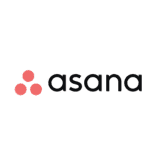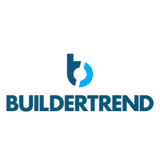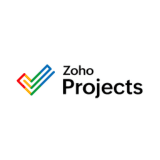- Free Version: Available for teams of up to 10
- Pricing: Premium plan $24/seat/month (with free 30-day trial period)
- Platforms supported: Available as a mobile app (iOS and Android) or a web-based software
Why use SafetyCulture?
SafetyCulture empowers construction teams to collaborate and communicate effectively, ensuring that projects are completed safely, efficiently, and on time, regardless of location. This mobile-first platform offers an all-in-one solution for document management, inspections, audits, and real-time communication for teams of all sizes. Additionally, the software’s analytics and reporting capabilities allow project managers and owners to make data-driven decisions, spot trends, and compare performance across job sites to reduce operational costs.
Key Features:
- Ensure consistency and alignment on project plans, safety protocols, and other important documents across multiple locations using Heads Up.
- Schedule tasks and assign action items to team members, enabling them to collaborate and provide real-time updates on progress.
- Spot trends, identify areas for improvement, and make data-driven decisions using the analytics and reporting features.
- Manage all construction documentation in one central location, accessible to all team members, reducing the risk of miscommunication and delays.
- Integrate with other collaboration and project management platforms to ensure seamless team communication and workflow.
Why use Orangescrum?
Orangescrum provides collaboration capabilities suited to construction projects. Its dynamic dashboards help construction teams visualize progress and stay on top of tasks. Additionally, Orangescrum has third-party integrations to streamline document management and file sharing for construction projects.
Key Features:
- Kanban board
- Project templates
- Project calendar
- Free Version: Available for up to 1 user
- Pricing: Professional Plan starts at $40/month, billed annually (with a free 15-day trial period)
- Platforms supported: Web, On-premise, Android, and iOS
Why use Asana?
Asana provides real-time collaboration features to help construction teams stay organized and coordinate effectively. Its task management system allows for easy tracking of progress and deadlines.
Key Features:
- Workflows
- Time tracking
- Reporting dashboards
- Free Version: Available
- Pricing: Starter Plan starts at $10.99/user/month, billed annually
- Platforms supported: Web, Android, and iOS
Why use Autodesk Build?
AutoDesk Build provides mobile-first, field collaboration capabilities that give contractors, owners, and architects real-time access to critical project information, such as plans, specifications, punch lists, and documents. The platform streamlines document management by automatically versioning and hyperlinking sheets and files, making them easily searchable.
Key Features:
- Document management
- Third-party integrations
- Reporting and dashboard
- Free Version: Not available
- Pricing: Starts at $200/user/month, billed annually (with a free 30-day trial period)
- Platforms supported: Web, Desktop, Android, and iOS
Why use TeamGantt?
TeamGantt’s real-time collaboration features enable seamless coordination for construction teams, allowing them to track progress, manage resources, and access critical project information in one hub. It also integrates with various platforms to streamline communication and document management for construction projects.
Key Features:
- Workloads and team availability
- Portfolio views and reports
- Planned and actual timeline view
- Free Version: Available
- Pricing: Starts at $15/manager/month, billed annually (with a free 7-day trial period)
- Platforms supported: Web, Android, and iOS
Why use Wrike?
Wrike’s collaboration features let teams track progress, manage resources, and access project information in one platform, with integrations for various productivity tools. The platform’s customizable dashboards and reporting provide insights into project performance and resource allocation, aiding construction teams in making informed decisions.
Key Features:
- Live document editor
- External requester collaboration
- Internal and guest approvals
- Free Version: Available
- Pricing: Team Plan starts at $9.80/user/month, billed annually (with a free 14-day trial period)
- Platforms supported: Web, Desktop, Android, and iOS
Why use Revizto?
Revizto provides robust collaboration capabilities that enable real-time coordination and communication across construction teams. The platform offers features like QR code generation for on-site issue tracking and customizable workflows to streamline construction project management.
Key Features:
- Issue location tags
- Level view creation
- Appearance templates
- Free Version: Not available
- Pricing: Contact vendor for pricing
- Platforms supported: Web, Android, and iOS
Why use Buildertrend?
Buildertrend offers real-time communication and collaboration features, enabling commercial contractors to share updates, tasks, and documents with their crew, subcontractors, and clients. The scheduling tool helps contractors plan project timelines and notify all parties of changes, improving field operations coordination. Buildertrend’s customer portal also gives clients direct access to project details and communication with the contractor, enhancing the client experience.
Key Features:
- Sub and customer portals
- File storage
- Scheduling
- Free Version: Not available
- Pricing: Essential Plan starts at $199/month
- Platforms supported: Web, Android, and iOS
Why use Fluix?
Fluix provides real-time collaboration capabilities for construction teams, allowing them to share and track progress on project documents. The platform also offers features like automated workflows, digital forms, and task assignments to streamline communication and document management.
Key Features:
- Automated workflows
- E-signature
- Guest access
- Free Version: Not available
- Pricing: Fluix Core starts at $50/user/month, with a minimum of 10 users
- Platforms supported: Web, Android, and iOS
Why use Zoho Projects?
Zoho Projects provides seamless collaboration tools such as messaging, video conferencing, and document sharing, which help teams stay connected and informed throughout the project lifecycle. The platform also features budget tracking, resource allocation, and defect management to manage construction projects.
Key Features:
- Forums
- Document management
- Real-time feeds
- Free Version: Available for up to 3 users
- Pricing: Premium Plan starts at $4/user/month, billed annually (with a free 10-day trial period)
- Platforms supported: Web, Android, and iOS
What is Construction Collaboration Software?
Construction collaboration software is a platform designed to facilitate communication and collaboration among multiple stakeholders involved in the construction process. This software enables teams to share project documents, drawings, schedules, and other important information in real time, regardless of location. By streamlining communication and document management, construction collaboration software helps reduce errors, improve efficiency, and ultimately increase the likelihood of project success.
Benefits
Here are some benefits of using construction collaboration software:
- Improved communication – With real-time messaging, video conferencing, and document-sharing capabilities, construction collaboration software allows teams to stay connected and informed throughout the project.
- Enhanced coordination – This software enables seamless coordination among team members, subcontractors, and clients by providing a central hub for all project information.
- Efficient document management – The ability to share and track project documents in one platform saves time and reduces errors often caused by multiple systems or manual methods.
- Better resource allocation – Construction collaboration software offers features like budget tracking and resource allocation to help manage resources effectively, resulting in cost savings.
- Streamlined workflows – Automated workflows and task assignments improve efficiency and reduce the risk of missing critical project deadlines.
- Enhanced client experience – Some construction collaboration software platforms include customer portals, which provide clients with direct access to project information and communication with the contractor, improving satisfaction and trust in the construction process.
Key Features to Look For
When considering which construction collaboration software to use, here are some key features to look for:
- Real-time communication and messaging
- Document management and version control
- Task assignment and progress tracking
- Customizable workflows
- Mobile accessibility
- Integration with other software
Choosing the Best Construction Collaboration Software
With so many options available, choosing the best construction collaboration software for your team can be challenging. The table below compares free versions, pricing, and mobile app accessibility, equipping you with the essential information to make well-informed decisions.
| Construction Collaboration Software | Free Version | Paid Plan | Mobile App |
| SafetyCulture | Yes | $24/user/month* | Yes |
| Orangescrum | Yes | $40/month* | Yes |
| Asana | Yes | $10.99/user/month* | Yes |
| Autodesk Build | None | $200/user/month* | Yes |
| TeamGantt | Yes | $15/manager/month* | Yes |
| Wrike | Yes | $9.80/user/month* | Yes |
| Revizto | None | Contact vendor for pricing | Yes |
| Buildertrend | None | $199 per month* | Yes |
| Fluix | None | $50/user/month | Yes |
| Zoho Projects | None | $4/user/month* | Yes |
* billed annually











